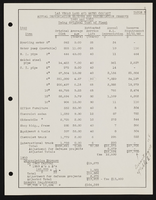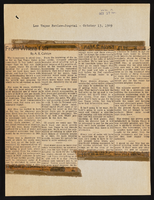Search the Special Collections and Archives Portal
Search Results
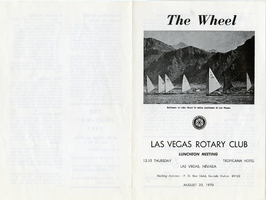
The Wheel Las Vegas Rotary Club newsletter, August 20, 1970
Date
Archival Collection
Description
Text

Transcript of interview with Lyn Robinson by Barbara Tabach, September 18, 2014
Date
Archival Collection
Description
One day in 2012, UNLV student Lyn Robinson spied a posting on the bulletin board for a photographer for the Sperling Kronberg Mack Holocaust Resource Center. She was an art major with a concentration on photography. She was also had a deep appreciation of the horror of the Holocaust and what the survivors she would take photos of had endured. Thus began a two year project, during which she took photos of over sixty survivors. Her images are preserved at UNLV Special Collections & Archives. Prints are displayed at the Sperling Kronberg Mack Holocaust Resource Center. On September 18, 2014, Lyn shared her work for this oral history recording. She is a native of Florida, daughter of a horticulturist father and pianist mother.
Text
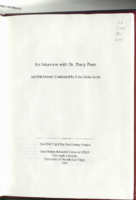
Transcript of interview with Dr. Percy Poon by Lisa Gioia-Acres, February 5, 2007
Date
Archival Collection
Description
Text
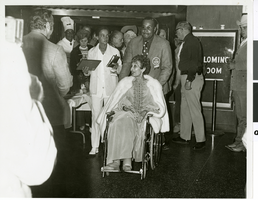
Photograph of Judy Bayley at a public event at the Hacienda Hotel and Casino, Las Vegas, Nevada, 1971
Date
Archival Collection
Description
Image

Tanya Olson oral history interview: transcript
Date
Archival Collection
Description
Oral history interview with Tanya Olson conducted by Claytee D. White on July 6, 2018 for the Remembering 1 October Oral History Project. In this interview, Olson recalls beginning October 2, 2017 to photograph scenes surrounding the aftermath of the shooting at the Route 91 Country Music Festival. Her efforts culminated in a film that highlights the Healing Garden, a memorial established after the shooting. It was dedicated on the first Friday of October 2017. Her 6-minute film, Forever In Our Hearts, is described as "Citizens unite to provide kindness and salve the wounds caused by the October 1, 2017 massacre during a Las Vegas country concert." The film was shown at the Nevada Women's Film Festival in 2018. Olson discusses beginning her latest endeavor, matriculating at the American Film Institute, a lifelong dream that she is pursuing after 23 years in the military, a film degree from University of Nevada, Las Vegas (UNLV), and completing her film project on one of the worst massacres in American history.
Text
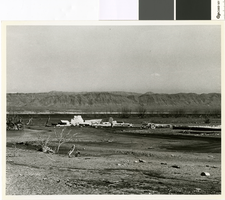
Photograph looking southeast through the remains of the post office in St. Thomas, Nevada, 1948
Date
Archival Collection
Description
The remains of the St. Thomas post office and Harry Gentry's store with Lake Mead in the background
Transcribed Notes: Bureau of Reclamation typed notes appended to back of photo: Boulder Canyon Project--Nevada--Region 3 St. Thomas, Nevada, was founded by the Mormons in 1855. In its heyday there were about 800 residents in the village. The "Main Street" was a part of the old Arrowhead Trail, which led from Salt Lake City, Utah to Los Angeles, California. In June 1938 the town was abandoned by its residents, which at that time were few in number because of the rising waters of Lake Mead that submerged the townsite. In 1945, after having been flooded for 7 years, receding waters of Lake Mead revealed St. Thomas much as it has appeared in former years. This photo was taken looking toward Mormon Mesa. The receding waters of the lake can be seen in the center of the photo.
Image


